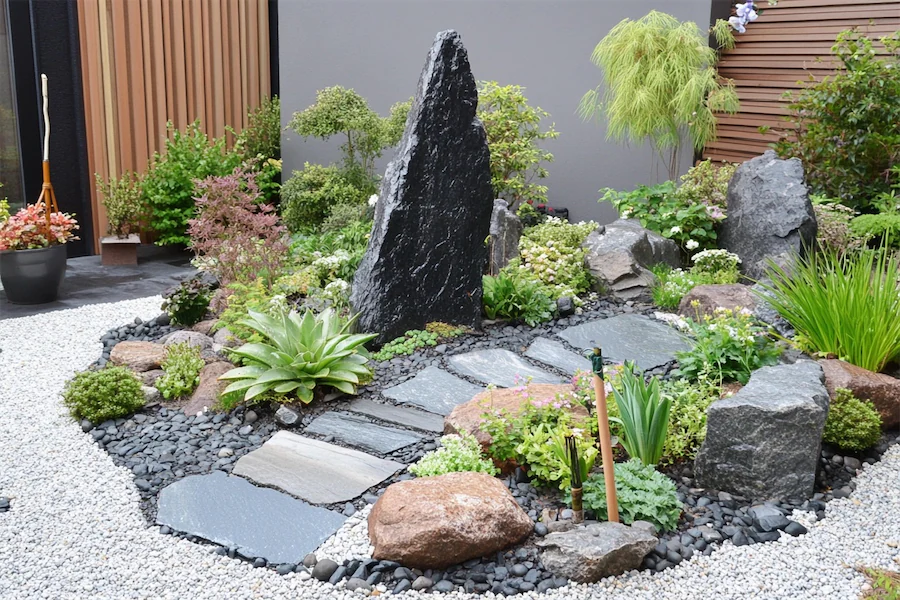Japanese Zen gardens, known as karesansui or dry landscape gardens, are minimalist and meditative spaces designed to evoke a sense of peace and serenity.
Originating from Zen Buddhism, this ancient approach to landscape design has existed for over a millennium.
History and Origins of Japanese Zen Gardens
The development of Zen gardens dates back to the 8th century, influenced by the gardens of China’s Song Dynasty. Initially, they featured elements like tiny lakes and islands covered with moss, aiming to represent nature’s spirit on a more intimate scale. During the 14th century, classical Zen gardens emerged in Rinzai Zen Buddhist temples, showcasing a simpler style incorporating large boulders and meticulously groomed gravel. These dry landscape gardens, or karesansui, were designed to inspire meditation and contemplation.
Key Features of Japanese Zen Gardens
Zen gardens are characterized by their minimalist design, using natural elements to symbolize larger landscapes:
- Rocks and Stones: Represent mountains or islands, carefully arranged to create a balanced composition.
- Gravel or Sand: Raked to mimic the appearance of ripples in water, symbolizing seas or rivers.
- Moss: Adds a sense of age and tranquility, often covering rocks or ground areas.
- Sparse Vegetation: Limited use of plants to maintain simplicity and focus on the symbolic elements.
These elements are thoughtfully arranged to reflect the beauty of nature in its most minimalist form, encouraging contemplation and inner peace.
Applications of Japanese Zen Gardens
Originally created and designed by Buddhist monks as a practice to calm the mind and aid meditation, Zen gardens have transcended religious contexts and are now appreciated worldwide for their aesthetic and calming qualities. They are incorporated into various settings, including private residences, public parks, and corporate spaces, serving as tranquil retreats from the stresses of modern life.
Considerations When Creating a Japanese Zen Garden
When designing a Zen garden, consider the following:
- Purpose: Determine whether the garden is for personal meditation, aesthetic enjoyment, or public use.
- Space: Even small areas can be transformed into Zen gardens; the key is thoughtful arrangement.
- Materials: Choose natural, locally sourced materials to maintain authenticity and harmony with the surroundings.
- Maintenance: Regular upkeep, such as raking gravel and controlling moss growth, is essential to preserve the garden’s intended appearance and symbolism.
Conclusion
Japanese Zen gardens embody the essence of simplicity and mindfulness, offering spaces that encourage reflection and tranquility. By understanding their history, key features, and applications, one can appreciate the profound impact these gardens have on both the physical environment and the human spirit.
